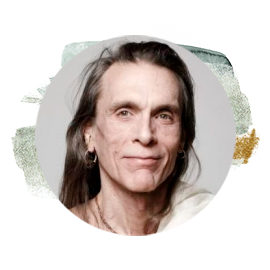This reference to a wild longhaired sage is thought to be the first ode to the yogi of Vedic times. This hermit is dirty and naked, flying through the sky, living in harmony with the natural world and completely outside of human culture. She is truly a wild child. Yogis stepped outside their culture and reclaimed their wildness a very, very long time ago.
When asked to describe “wildness” most people would use negative terms like: “out of control,” “unrefined,” “unruly,” or “self centered.” Wild things are untamed and deemed not useful to most human beings. A wild horse is not useful until tamed, trained, saddled, and bridled, (or turned into horse burgers). A field of wildflowers is not useful until it is fenced, tilled, fertilized, mono-cropped, sprayed, harvested, and hoarded. A wild rushing stream is not useful until it is dammed, piped, bottled, electrified, and stagnated. Wild equals “not valuable,” while tame equals “valuable.” Nature only plays a minor role in providing the raw ingredients to satisfy human desires and greed. But our greed is insatiable and the raw ingredients are running out. The wild ones are seen as pests and targets for killers. Humans view themselves as the ones who distill the value out of the forests, soil, water, oil and gas, as well as fish, whales, dolphins, horses, elephants, bears, tigers, lions, squirrels, rabbits, and all the other living creatures of the earth. Instead of celebrating life with other living creatures, we are auditing their demise, and probably our own.
Human beings are destroying the seed of wildness in themselves that gives life its rasa – its special taste. In a rush to destroy ecosystems and diversity, humans happily rush to an Armageddon of blandness.
The yogi feels a part of the world and all of creation. For the yogi, the definition of wild is free, creative, robust, and meditative, in community with all of nature. This feeling is part of our original state that is corrupted by a culture that sees the world as exploitable. In the ancient Sumerian Epic of Gilgamesh we learn of a natural creature named Enkidu who suckled at the breasts of the animals and grazed with them in the meadows. Hunters discover Enkidu as he helped the animals escape their traps. The stories about this wild one who could speak to all creatures intrigued the King Gilgamesh, who proceeds to seduce, hire, educate and befriend Enkidu. It is a sad story of how each of us lost our connection to nature and the natural world. Our own wildness is a lost treasure that must be recovered at all costs.
When Enkidu dies Gilgamesh recites this elegy to the natural human:
Enkidu, . . . your mother is a gazelle,
and . . . your father who created you, a wild ass.
[You were] raised by creatures with tails,
and by the animals of the wilderness, with all its breadth.
The paths going up to and down from the forest of cedars
All mourn you: the weeping does not end day or night
—Tablet VIII Epic of Gilgamesh
The whole world mourned the passing of Enkidu, even the trees and pathways. A treasure had been lost – the connection between humans and the rest of creation. The hero yogis of our time transform into the multiplicity of creation every day in order to realign with the force of creation and retrieve what has been lost – our wildness.

